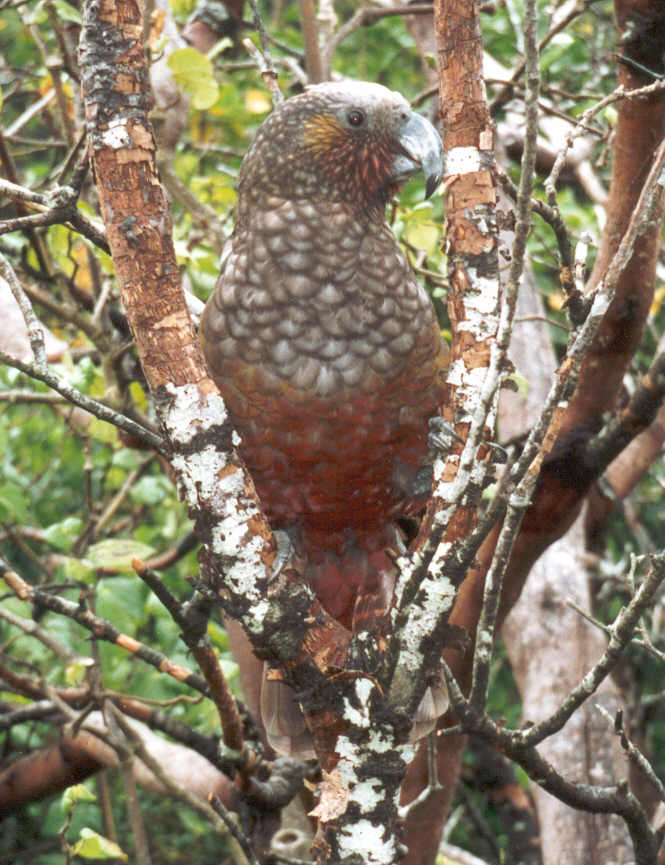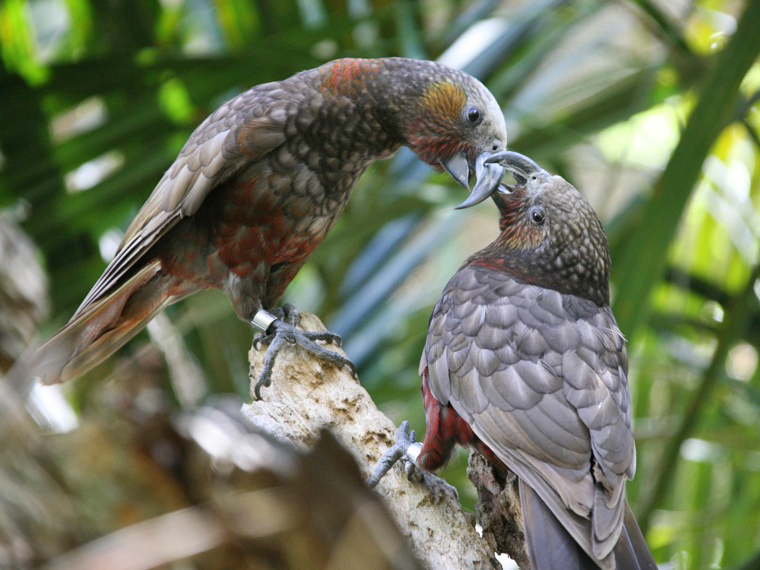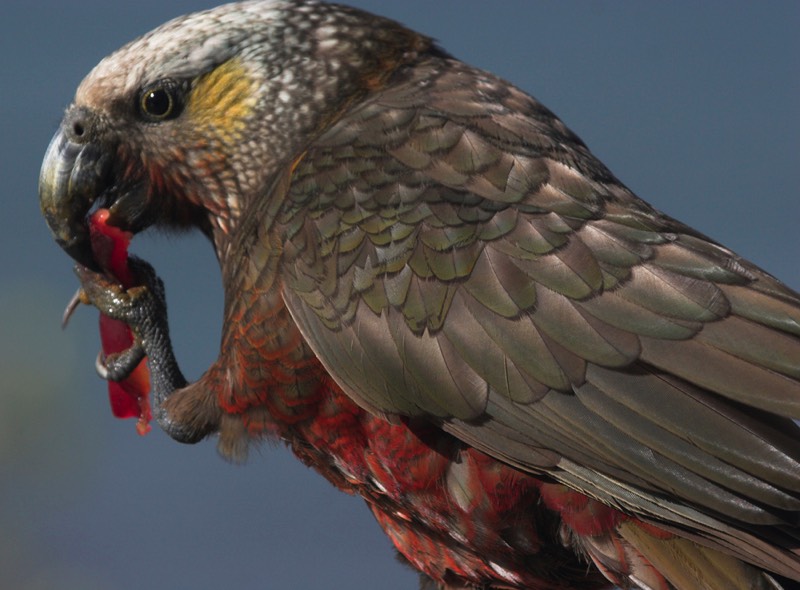New Zealand Kaka - Nestor Meridionalis - Endangered
The New Zealand kaka (Nestor meridionalis) is a large species of parrot of the family Nestoridae found in native forests of New Zealand. Two subspecies are recognized. It is endangered and has disappeared from much of its former range.
Taxonomy and Naming: The New Zealand kaka was described by German naturalist Johann Friedrich Gmelin in 1788. There are two subspecies, the North Island kaka, Nestor meridionalis septentrionalis, and the South Island kaka, N. m. meridionalis, although more recent research has ruled out allopatric subspeciation. The Māori language name kākā means "parrot", possibly related to kā, 'to screech'.
Description: The New Zealand kaka is a medium-sized parrot, measuring 45 cm (18 in) in length and weighing from 390 to 560 g (14 to 20 oz), with an average of 452 g (0.996 lb). It is closely related to the kea, but has darker plumage and is more arboreal. The forehead and crown are greyish white and the nape is greyish brown. The neck and abdomen are more reddish, while the wings are more brownish. Both sub-species have a strongly patterned brown/green/grey plumage with orange and scarlet flashes under the wings; colour variants which show red to yellow colouration especially on the breast are sometimes found.
Distribution and Habitat: The New Zealand kaka lives in lowland and mid-altitude native forest. Its strongholds are currently the offshore reserves of Kapiti Island, Codfish Island and Little Barrier Island. It is breeding rapidly in the mainland island sanctuary at Zealandia with over 800 birds banded since their reintroduction in 2002.[12] From their reintroduction in 2002 the North Island kaka continue to re-colonise Wellington and a recent report shows a significant increase in their numbers over the last 12 years.
Behavior: Kaka are mainly arboreal and occupy mid-to-high canopy. Often seen flying across valleys or calling from the top of emergent trees. They are very gregarious and move in large flocks often containing kea where present.
Diet: The New Zealand kaka eats fruits, berries, seeds, flowers, buds, nectar, sap, plants and invertebrates. It uses its strong beak to shred the cones of the kauri tree to obtain the seeds.[14] It has a brush tongue with which it feeds on nectar, and it uses its strong beak to dig out the grubs of the huhu beetle and to remove bark to feed on sap.[15]
Nesting: New Zealand kaka make their nests in hollow trees, laying clutches of 2 to 4 eggs in late winter. Both parents assist in feeding the chicks. In a good fruiting year pairs can double clutch often utilizing the same nest hole for the second clutch. It is unusual for a pair to raise more than three chicks in a clutch.
Conservation Status: The New Zealand kaka is considered endangered (CITES II). It has greatly declined across its traditional range as a result of habitat loss, predation by introduced predators like rats, possums and stoats, and competition from wasps and bees for the honeydew excreted by scale insects. A closely related species, Nestor productus, the Norfolk kaka, became extinct in 1851 for similar reasons.
New Zealand Kaka - Endangered

North Island Kaka - Endangered

South Island Kaka - Endangered

Psittaciformes, The Parrot Index, a part of Phoenix Feathers © 2016 - 2024
Page last updated: 1/23/24
Phoenix Feathers

